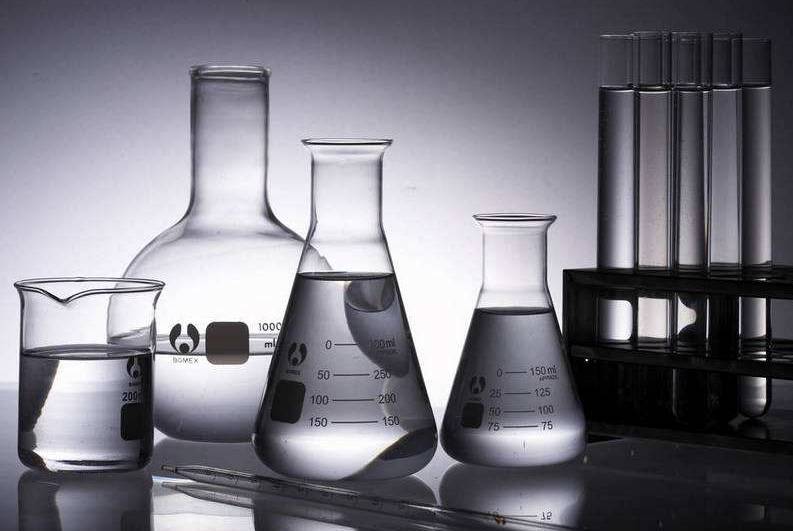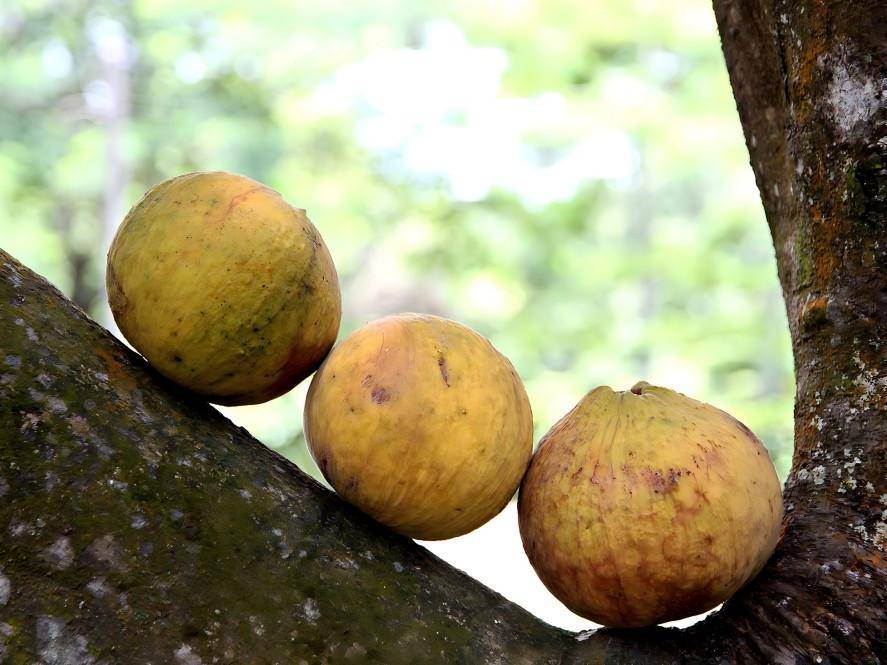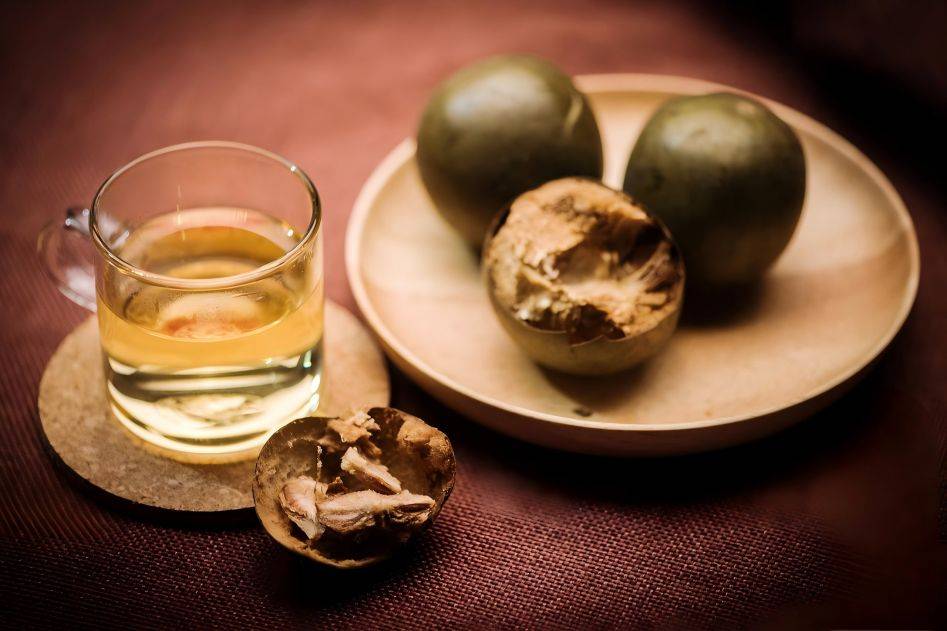What Is the Use of Mogroside?
Sweetness can bring a pleasant feeling, so sweeteners are widely used in food as additives or flavor enhancers. However, a diet high in sugar can lead to health problems such as diabetes or promote oxidation. Natural sweeteners do not have the disadvantages of first-generation sweeteners, such as high calorie content, or the safety issues of second-generation sweeteners. They have the advantages of high stability and a good taste. Luo Han Guo is the dried fruit of the Luo Han Guo plant in the Cucurbitaceae family [1]. Mogroside is the collective name for the glycoside compounds of the cucurbitane type with mogroside alcohol as the aglycone, and is the main source of the sweetness of Luo Han Guo. Among them, mogroside V is the main factor affecting sweetness.
1 Extraction and separation of mogroside
1.1 Extraction
solvent extraction method is the most commonly used method for extracting Mogroside in experiments. Water has often been used as a solvent to extract Mogroside in the past, but the extract contains a high level of impurities when water is used as the extraction solvent. Yan Jiawei et al. [2] used reflux extraction to extract Mogroside. Under the optimal extraction conditions of 50% ethanol, a material-to-liquid ratio of 1:20, an extraction temperature of 60°C, shaking for 100 min, and extraction three times, the final measured extraction rate of Mogroside was 5.9%. Today, microwave and/or ultrasound-assisted methods are also used to extract Mogroside. Although the extraction efficiency is high, it will take some time to achieve industrial production due to equipment limitations [3].

1.2 Separation
The macroporous resin method has been commonly used in recent years for the separation of highly polar compounds, and is particularly suitable for the purification and separation of saponins. Liu Gengui et al. [4] found that the best conditions were a single ethanol concentration gradient for elution, 60% ethanol, pH=8.0, a column flow rate of 1 BV·h-1, and a diameter-to-height ratio of 1:45. Without the premise of in-depth impurity removal, Mogroside V with a content of 71.1% can be obtained. He Anle et al. [5] experimentally optimized the competitive adsorption of Mogroside V during separation using macroporous resins. Among the six types of macroporous adsorption resins tested, LX-T28 was the most effective. The optimal conditions for column chromatography were 12.15% ethanol concentration, 61.33% ethanol concentration, 0.54 BV·h-1 upper column flow rate, and 1.00 : 4.82 diameter-to-height ratio.
In a high-concentration alcohol solution, primary metabolites such as polysaccharides have low solubility and can be converted into precipitates. Mogroside is extracted using a low-concentration alcohol or water as a solvent. The solution contains many impurities. In order to obtain a high-purity product and prevent some impurities from damaging sophisticated instruments, such as the toxic effect of chlorophyll on resin, preliminary separation or pretreatment can be performed before fine separation. Zhang Zesheng et al. [6] used ZTC-II natural clarifier to pretreat the extraction solution to remove primary metabolites. The ZTC-II natural clarifier used was produced by Wuhan Zhengtiancheng Biotechnology Co., Ltd. Through experiments and data analysis, it is believed that the best clarification conditions are to first dilute the extract to 0.67 times the original solution, keep it at 40 °C for 30 min, and add 1% B component 2.33 mL/100 mL and 1% A component 0.67 mL/100 mL. This natural clarifier is more effective than chitosan, JH clarifiers, etc. In addition, membrane separation technology and semi-preparative high-performance liquid chromatography can also be used to isolate Mogroside [7].

2 Determination and enhancement of Mogroside content
2.1 Content determination
Modern chromatography has the advantages of being easy to operate and having good reproducibility. It is often used for the determination of the content of mogroside, and can also be coupled with instruments according to requirements. Mu Junfei et al. [8] used high performance liquid chromatography tandem mass spectrometry to determine that the relative molecular mass of mogroside is large, and the sensitivity of the target peak is low when using multiple reaction monitoring mode. Mogroside content can also be directly measured using ultraviolet-visible spectrophotometry at a wavelength of 203 nm, or after vanillin-perchloric acid color development, at a wavelength of 590 nm [6]. Compared to high-performance liquid chromatography, ultraviolet-visible spectrophotometry is less expensive and faster.
2.2 Content improvement
The cultivation method and harvesting treatment of medicinal plants can affect the content of mogroside V. Li Xiaoyi et al. [9] found in experiments that field management can improve the content of mogroside V by spraying foliar fertilizers while applying seedling-promoting fertilizers and seed-and-fruit-strengthening fertilizers. Compared with sloping land cultivation, flat land cultivation with foliar fertilizer application can more effectively increase the content of mogroside V. Whether in flatlands or mountainous areas, the foliar fertilizers “Jinlvyuan”, “Ye Libu” and “Tishichang” can significantly increase the chlorophyll content of leaves and the Mogroside V content in fruits.
Liu Wen et al. [10] used high-performance liquid chromatography to determine the content of Mogroside IV and Mogroside V in fresh Luo Han Guo fruits of different fruit ages from the Yongfu base in Guilin. The content of mogroside V increased with fruit age and stabilized after 70 days. The content of mogroside IV peaked at around 50 days. Wei Rongchang et al. [11] sprayed different concentrations of methyl jasmonate on 50-day-old Luohanguo fruits after artificial pollination, observed the expression of three key enzyme genes involved in the synthesis of Mogroside V. At the optimal concentration of 200 μmol·L-1, methyl jasmonate significantly increased the expression of the key enzymes squalene synthase (SQS) and cucurbitadienol synthase ( CS) gene expression, while inhibiting the expression of Cycloartenol Synthase (CAS) gene. However, the relationship between the changes in the expression levels of these three key enzyme genes and the changes in Mogroside V content needs to be further investigated in follow-up experiments.
Gan Jinjia et al. [12] compared the space-bred “Guihang No. 1” Luohanguo with six main cultivated strains of Luohanguo and found that “Guihang No. 1” has the characteristics of early maturity and vigorous growth in the early stage, and the content of Luohanguo sweet glycoside V is significantly higher than that of the six main cultivated strains. Zhai Yongjin et al. [13] found that moderate shading and spraying with sodium nitrite are conducive to increasing the net photosynthetic rate of Luo Han Guo and thus increasing the content of Mogroside V.
3 Mogroside applications
3.1 Chinese herbal medicine decoction partner
Most Chinese herbal medicine preparations are decoctions, and the generally bitter taste is a major reason for the low acceptance of Chinese herbal medicine. The current means of masking the taste mainly include the following three: ① the use of flavor modifiers or bitter taste inhibitors; ② modification of the structure of the substance; ③ changes in the preparation method [14]. Qiu Min et al. [15] used an electronic tongue and a visual analogue scale method to evaluate the taste-masking effect of Mogroside as one of the raw materials for Chinese herbal medicine decoction partners. The results showed that the taste-masking effect of the partner containing Luohanguo glycoside was better. With the development of science and technology, Chinese herbal medicine decoction partners with different tastes will emerge for consumers to choose from.

3.2 Food additives
In 1996, Mogroside was approved for widespread use as a food additive, and in 2002, the Food and Drug Administration (FDA) approved it as a food additive that can partially or completely replace sucrose. Depending on the food category, Mogroside is added directly or Luo Han Guo powder is added. Mogroside is included in the composition of table sweeteners such as Hongmian Luo Han Guo sugar [16]. Milk tea and fruit tea have replaced coffee as the mainstream drink for a new generation of young people. To reduce the sugar intake in milk tea, some consumers choose milk tea with a sweetness of one-third sugar. Although the sugar content is reduced, the taste of the milk tea has worsened and the flavor has become weaker.
Liu Yonglin et al. [17] believe that Mogroside sugar-substitute yogurt, developed on the basis of the processing technology of set yogurt, has broad market prospects. This new type of yogurt not only retains the original qualities of yogurt, but also improves the disadvantages of high sugar and high calories of sucrose. Xiong Yao et al. [18] used Luo Han Guo roasted fruit as an auxiliary ingredient to prepare low-sugar milk tea powder. Li Jian et al. [19] determined the CO2 concentration in the solution by potentiometric titration and found that the use of Mogroside is beneficial in slowing the escape of CO2 and ensuring the taste of carbonated drinks. Li Jia et al. [20] used a condensation reflux extraction process to prepare a Luo Han Guo liquor seasoning solution. Zhang Ying et al. [21] found that adding an appropriate amount of Mogroside is beneficial for extending the shelf life of stewed pork belly. It can be used as an antioxidant for meat products. When 0.3% mogroside is added, the taste is the best, the color is bright, it has a sweet taste, and the effect of inhibiting fat oxidation is obvious. He Anle et al. [22] found in an in vitro antioxidant experiment that Mogroside V had a DPPH radical scavenging rate of 49.19% at a concentration of 1.2 mg·mL-1 and an ABTS scavenging rate of 47.56% at a concentration of 1.4 mg·mL-1.

3.3 Natural green feed additives
Xu Jianjian [23] and others conducted a controlled experiment to observe the effects of adding 600 mg·kg-1 Mogroside to the basic feed on the slaughter performance and meat cortex of lake sheep. The results showed that Mogroside had no significant effect on the color and blood physiological and biochemical indicators of lake sheep meat, which is beneficial to the fattening of lake sheep and improves muscle tenderness and slaughter performance. It is speculated that mogroside may increase fat content and improve taste by regulating enzymes and functional groups, improving the number of intramuscular fat cells and the ability to synthesize fat. There was not much difference between the two groups in terms of live weight, carcass weight, net meat weight and slaughtering rate before slaughter, but the overall performance of the experimental group was better than that of the control group, and the net meat rate was significantly higher than that of the control group.
4 Conclusion
Luohanguo, as one of the plants that can be used for both medicine and food, has broad market prospects. By analyzing the active ingredients of Luohanguo, adjusting field management measures, increasing the content of target ingredients, and selecting and breeding excellent germplasm, we can obtain Chinese medicinal materials with high yield, stable and effective dried Luohanguo fruits. The monomeric Luohanguo sweet glycoside V cannot be fully met by plant extraction alone. The analysis of the biosynthetic pathway of Mogroside V, the cloning and function verification of key enzymes have been completed. How to successfully produce Mogroside V in microbial cell factories is an inevitable trend of future research. There are 7 species of plants in the genus Mogrosia, 4 of which are found in China. Extracting the Mogroside V monomeric component can expand the sources of plants and reduce the difference between supply and demand. In the future, publicity efforts for Mogroside V can be increased to allow more consumers to learn about this natural non-sugar sweetener and further expand the market.
References
[1] National Pharmacopoeia Commission. Pharmacopoeia of the People's Republic of China: Part I [M]. Beijing: China Medical Science and Technology Press, 2020.
[2] Yan Jiawei, Jiang Xiaokun. Optimization of Mogroside Extraction Process and Development of Natural Throat-Benefiting Health Candy [J]. Northeast Agricultural Science, 2019, 44(5): 116-122.
[3] Li Yumeng, Zhang Zesheng, Qin Chengguang, et al. Research progress on the extraction and activity of Mogroside [J]. Food Research and Development, 2017, 38(8): 220-224.
[4] Liu Gengui, He Anle, Huang Huaxue, et al. Research on process optimization of Mogroside V purification based on macroporous adsorption resin [J]. Enterprise Technology and Development, 2021(6): 42-44.
[5] He Anle, Xiong Yao. Study on competitive adsorption behavior of Mogroside V by macroporous adsorption resin and optimization of purification process [J]. Food Science and Technology, 2023, 48(1): 188-196.
[6] Zhang Zesheng, Luo Dan, Wang Tianxin, et al. Study on the extraction and clarification process of Mogroside with ZTC-Ⅱ natural clarifier [J]. China Food Additives, 2018(3):55-60.
[7] Zhang Xing. Research progress in the extraction and separation and detection technology of Mogroside [J]. Anhui Chemical Industry, 2017,43(2):4-6.
[8] Mou Junfei, Wang Shaoxu, Luo Qin, et al. Determination of the content of six Mogrosides in Luo Han Guo by HPLC-MS [J]. Food Research and Development, 2018, 39(15): 139-144.
[9] Li Xiaoyi, Chen Le, Xu Jie, et al. The effect of four kinds of foliar fertilizers on the content of mogroside V in Luo Han Guo [J]. Southern Horticulture, 2018, 29(2): 10-14.
[10] Liu Wen, Wang Zhihong, Yang Peiqing, et al. Study on the content distribution of mogrosides in Luo Han Guo of different fruit ages [J]. Shandong Chemical Industry ,2017,46(12):12-15.
[11] Wei R C , Qin F , Tang M Q , et al. Effect of methyl jasmonate on the expression of SQS, CS and CAS genes in Luo Han Guo [J]. Northern Horticulture ,2019(2):42-47.
[12] Gan Jinjia, Mao Lingli, Jiang Shuiyuan, et al. Comparison of the characteristics of the clonal line “Guihang No. 1” and the main planting line of Luohanguo [J]. Chinese Materia Medica, 2022(7): 1561-1565.
[13] Zhai Yongjin, Huang Hao, Bai Longhua, et al. Study on the relationship between net photosynthetic rate and sweetener V in Luo Han Guo [J]. Chinese Materia Medica, 2022, 45(4): 799-803.
[14] Liu Congyan, Qu Ding, Huang Mengmeng, et al. Reflections on the research of taste-masking technology for Chinese medicine granules [J]. Journal of Traditional Chinese Medicine, 2016, 31(9): 3658-3661.
[15] Qiu Min, Yang Jing, Wang Xiaoyu, et al. Suitability of Chinese herbal medicine decoction partners for suppressing bitterness and covering the taste in classical famous formulas [J]. Chinese Herbal Medicine, 2022, 53(8): 2292-2301.
[16] Wang C, Zhang SC, Wang J, et al. Research progress and development suggestions for the application of mogroside [J]. Modern Food, 2020(14):61-65.
[17] Liu Yonglin, Zhang Kexin. The sugar-replacing effect of mogroside in yogurt and its application prospects [J]. China Dairy Industry, 2021(7):109-113.
[18] Xiong Yao, He Anle, Liu Gengui, et al. Research on the preparation process of low-sugar milk tea powder based on natural sweeteners [J]. Enterprise Technology and Development, 2021(5):55-57.
[19] Li Jian, Zhu Xuehua, Liao Qiumei, et al. The effect of Mogroside on the gas retention of carbon dioxide in an aero-sol [J]. Light Industry Technology, 2022(3):31-33.
[20] Li Jia, Zhao Hua, Li Yan. Process research on Luohanguo liquor flavoring solution [J]. China Food Additives, 2018(1):153-158.
[21] Zhang Ying, Zhang Yuqing, Yang Mingdao, et al. Effect of Mogroside on the quality and storage stability of stewed pork belly [J/OL]. Food Industry Science and Technology: 1-10 [2022-11-10].
[22] He Anle, Xiong Yao, Liu Gengui, et al. Study on the purification process and antioxidant activity of Mogroside V in subcritical water [J]. China Food Additives, 2023, 34(2): 85-92.
[23] Xu Jianjian, Huang Xingcai, Wei Guicong, et al. Effect of Mogroside on growth performance, blood physiological and biochemical indicators, slaughter performance and meat quality of Hu sheep [J]. Modern Animal Husbandry, 2022(5):29-33.


 English
English French
French Spanish
Spanish Russian
Russian Korean
Korean Japanese
Japanese






